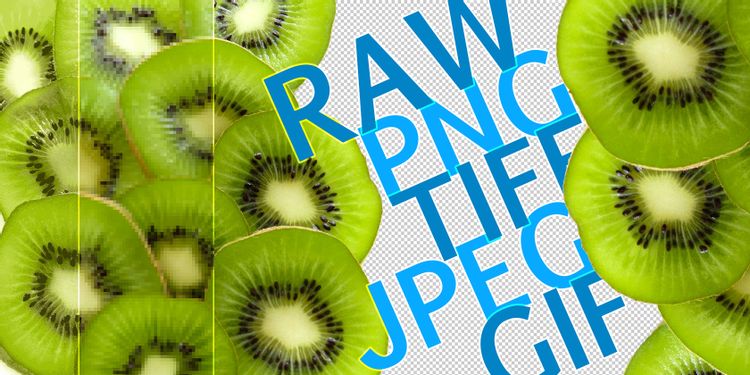
Most people take image files for granted. We see and use them every day, but rarely stop to think about the different ways they are created, displayed, stored and manipulated.
This is where things get interesting, as if you dig a little deeper you will realize just how many different file formats there are for images alone. From JPEGs to PNGs, from BMPs to TIFFs, this is an acronym-heavy area of tech that is not often discussed.
To bring you up to speed, here is a basic overview of the reason behind the multitude of image file formats that are still in use today.
The need for compression

First and foremost, different file types for images have been created over the years because of the need to compress pictures so that they are less data-intensive. This is particularly relevant in the context of web development, where site owners cannot use large, uncompressed impact files because of the performance impact this will have on page load speeds.
In this context, JPEGs reign supreme, occupying the top spot in terms of sheer popularity when it comes to compressed image files. This applies not only to websites of course, but also to other places where images are shared and distributed online, such as in emails or via social media.
If you convert a JPEG to PDF, you will see just how unwieldy other formats are in comparison. Sure, you have to put up with compromises in terms of the quality and precision of the output file, but this is a sacrifice worth making in lots of scenarios.

Another perk of JPEGs is that their ubiquity means that they are also supported more broadly than almost anything else. Across every browser, OS and device, you can expect JPEG images to display correctly, while their compressed nature makes them smaller than lossless source files.
That is not to say that JPEGs are the only web-friendly image file format out there; PNGs are also widely used, and can reproduce the original image more precisely, as well as handling transparent elements more successfully. However, this has not stopped JPEGs from continuing to dominate.
The professional approach
Professional photographers, designers and marketers all need to harness images in the line of duty, and for higher level editing and manipulation purposes, the aforementioned formats simply won’t do.
This is where lossless formats come into play, of which TIFF is one of the best known. Indeed TIFF images are able to retain all the detail when they are saved, and can offer excellent scaling because they are predominantly intended for use with raster graphics.
There are also platform-specific file types which are created within and accessible by a specific software ecosystem. PSDs, otherwise known as PhotoShop Documents, are a major example of this, but there are many others.
The appeal of animation

Another point worth noting is that some image file formats have come about in order to do more than just display static pictures.
Take GIFs for example, which remain immensely popular online because of their ability to showcase animated content, whether that might be hand drawn, computer generated or translated from a video source file.
As you can see, all of these image file formats serve a specific purpose, whether that might be to reduce the size of files, to fulfill the needs of professional users, or to protect the platforms produced by software developers for image editing itself. There is a place for all of them in the digital age, although the key is to know when to use them.




